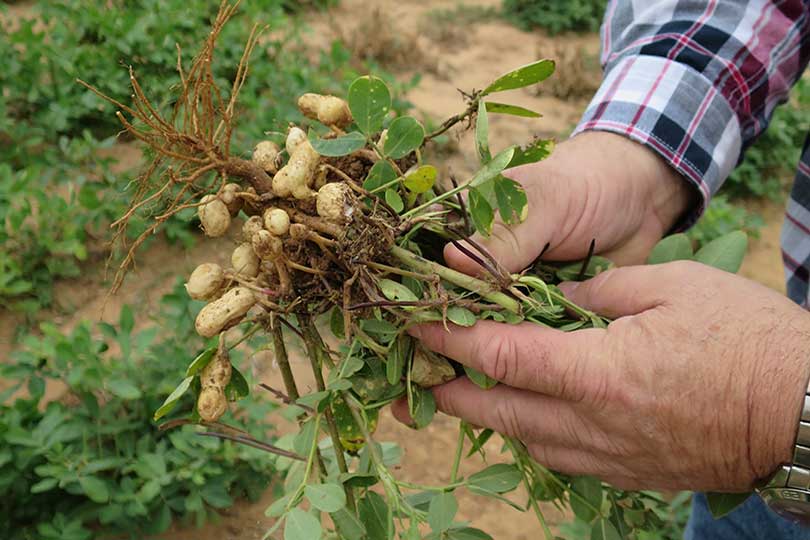Peanut harvest has already started rolling in areas of the South Plains. Texas farmers are expected to harvest from 160,000 to 190,000 acres of peanuts, according to Southwest Farm Press.
About 588 million pounds of peanuts were harvested in Texas in 2015, according to U.S. Department of Agriculture (USDA) data. The Aug. 1 USDA forecast projected Texas would produce about 561 million pounds this year.
Peanut harvest is a two-step process, first involving digging them up from where they’ve been growing underground and then flipping them. The pods are exposed to the sun and left to dry from seven to 10 days. Then farmers return to the fields for a machine harvest.
Farmers anticipate average yields due to the mid-summer dry stretch with temperatures that surpassed 105 degrees, according to the Lubbock Avalanche-Journal.
The region received a 10-day stretch of cool, wet conditions in September. But the rains came too late into the growing season to benefit yields. Wash-out was a concern for isolated fields after the area received as much as 7 to 10 inches in two weeks. The weather factors did cause concern for disease infestations, including Sclerotinia, according to Southwest Farm Press.
“There were peanuts that were starting to stress,” Western Peanut Growers Association Executive Director Robbie Blount told the Lubbock Avalanche-Journal. “If we would’ve had the rains we had in September back in July, we would’ve had a bumper crop.”
Blount predicts between an average and slightly below average harvest.
A cold front that passed through the region last week may have hindered late-season growth, according to David Teichroeb, a farmhand at a peanut farm in Seminole.
Yields will vary significantly among fields, Executive Director of Texas Peanut Producers Shelly Nutt told the Lubbock Avalanche-Journal.
Nutt says some farms could yield up to three tons per acre and others won’t even be worth harvesting. She says non-irrigated peanut fields that have zero-yielding acres will benefit more from leaving them in the field to boost soil quality.
“They’ll reap more benefits from just leaving them in the field than from harvesting them,” Nutt said.
She anticipates peanut farmers will begin full-scale digging within a week or so. She said some farmers are using a technique called hull-scraping to determine if the peanuts are mature or need more time to develop before harvest.
“They’re just watching the fields really close right now,” Nutt said.
Quality of the peanuts is unknown until grading time starts in a couple weeks, Jeff Carlisle, a spokesman for Birdsong Peanuts’ Brownfield operation, told the Lubbock Avalanche-Journal.
“We won’t really know until everything starts coming across the scale,” Carlisle said.

